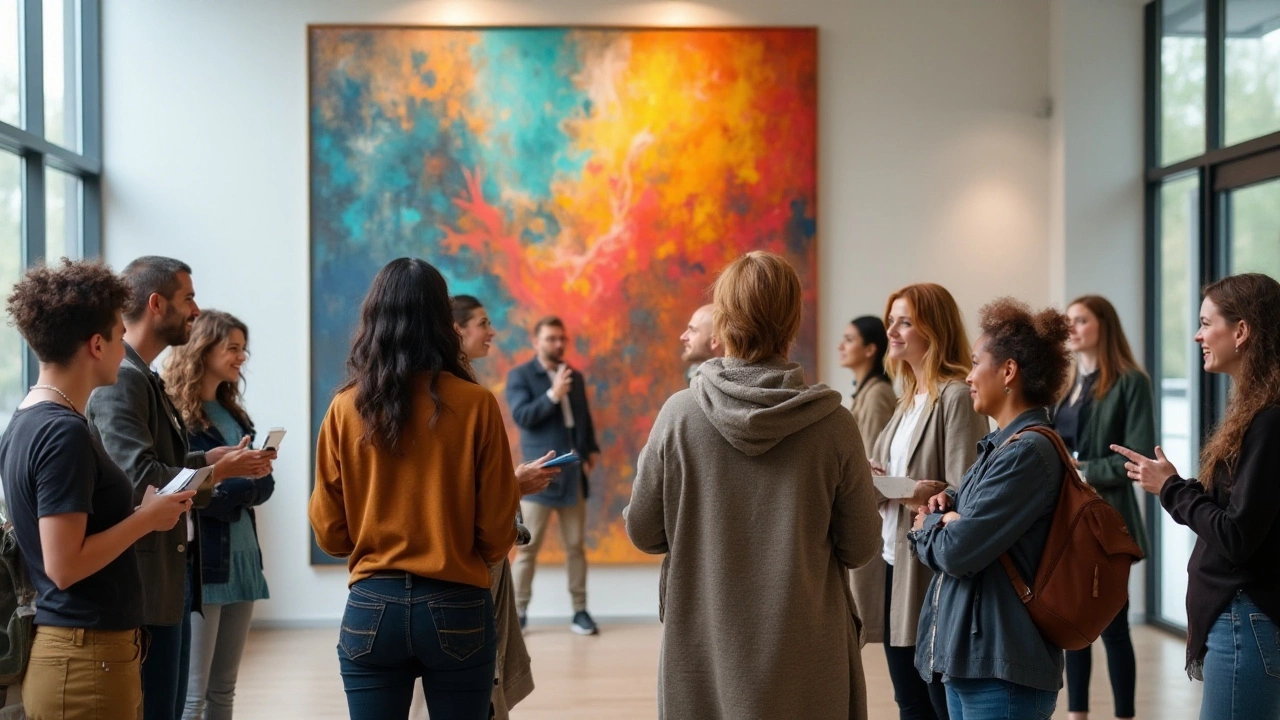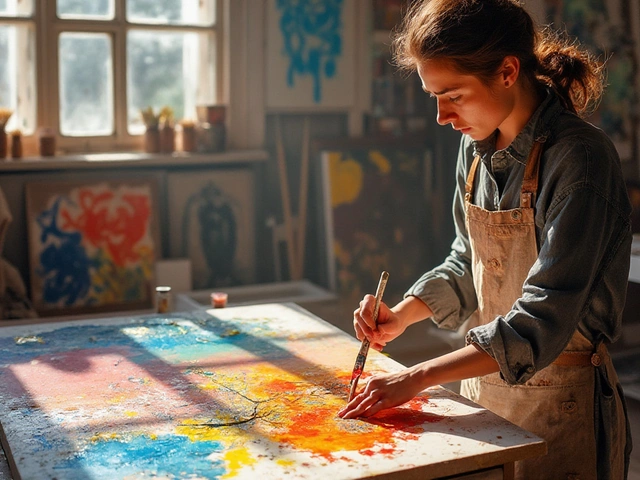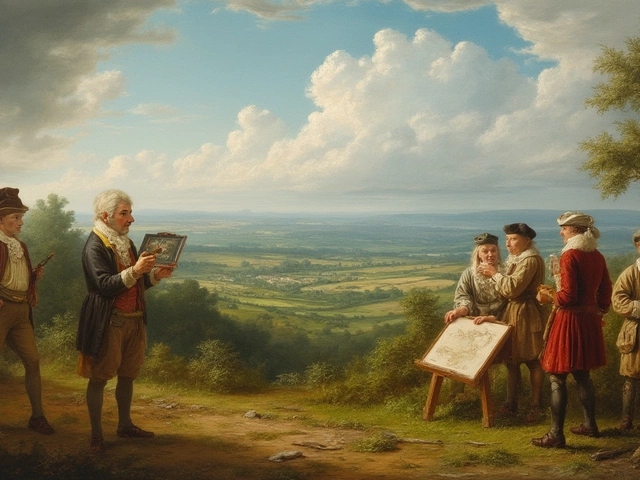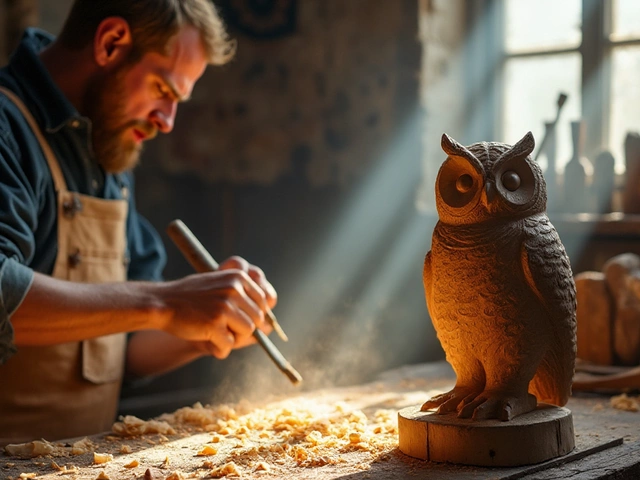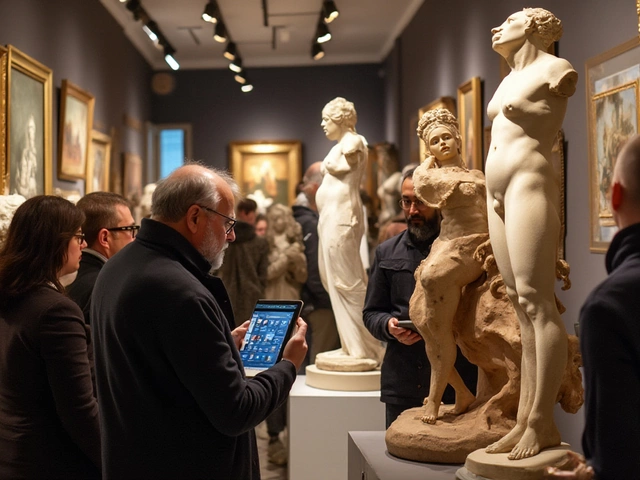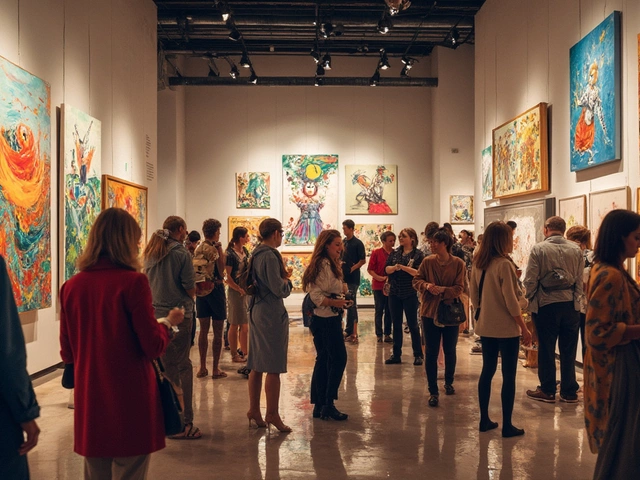Modern art has a way of stirring the pot, challenging our perceptions, and occasionally leaving us scratching our heads. But how does one go about judging something so subjective? The key lies in understanding its various facets — from historical backdrops and innovative techniques to the emotion it evokes within us.
While it might seem like an enigma, there's a method to unraveling the meaning behind the brushstrokes. By examining the context, techniques, and influences of modern art pieces, as well as tapping into our own personal responses, we can start to build a framework for appreciation and critique.
- Understanding the Context
- Techniques and Innovation
- Historical Influences
- Personal Connection
- Tips for Art Critique
Understanding the Context
When it comes to modern art, the context within which a piece is created can hold the key to unlocking its meaning. Historical, cultural, and personal influences intertwine to form the backdrop from which a work emerges. Many artists express what words cannot, using their creations as a form of dialogue with the viewer. To truly appreciate modern art, one must dive into the time and environment in which the artist was working. This might involve considering the social and political climates, the personal experiences of the artist, or even significant events that might have inspired the piece. For instance, the abstract expressionist movement burgeoned in the context of post-war freedom, allowing artists to explore raw emotions and ideas through unprecedented forms and colors.
Understanding the era's cultural landscape can offer insights. In the early 20th century, the world was seeing rapid industrialization, which influenced the dynamics of art movements like futurism. Futurists embraced technology, speed, and innovation, reflecting the fast-paced change of their time. Conversely, the dadaists responded to the horrors of World War I with artworks that appeared nonsensical but were laden with messages of critique against societal norms. Marcel Duchamp's infamous 'Fountain', a simple urinal signed with a pseudonym, challenged traditional perceptions of art and questioned the status quo. This wasn’t just rebellion; it was a profound commentary on what art could be.
An artist's personal journey is also integral. Vincent van Gogh, known for his bold, emotional use of color, was deeply affected by his mental health struggles. His piece, 'Starry Night', is more than swirling skies and glimmering stars; it is a reflection of his turbulent emotional state. Knowing about such personal contexts can significantly alter our understanding and appreciation. The lens through which you view modern art changes what you see. Recognizing this is crucial for making sense of the seemingly abstract or chaotic works. As art critic Robert Hughes once said,
"The greater the artist, the greater the doubt. Perfect confidence is granted to the less talented as a consolation prize."This illustrates that the complexities and uncertainties inherent in an artist's journey often translate into their finished works.
Diving into specific examples or eras can sometimes help solidify one's grasp on context. A valuable exercise is examining the movements and artists side by side, perhaps listing prevailing themes or ideas. Below is a simple breakdown of some key modern art movements and their contextual drivers:
| Art Movement | Contextual Drives |
|---|---|
| Impressionism | Rejection of traditional constraints, exploration of light and its effect on surfaces |
| Cubism | Fragmentation of reality, multidimensional views on canvas |
| Surrealism | Dream-like visions, tapping into subconscious desires |
| Abstract Expressionism | Post-war self-expression, exploration of human psyche |
Remember, the modern art journey is both complex and rewarding. By delving into the rich tapestry of history and personal narratives, you transform your experience from mere observation to active engagement.
Techniques and Innovation
Diving into the world of modern art, one cannot help but marvel at the diverse array of techniques and innovations that artists employ to convey their messages. The 20th century marked a significant shift in how art was created and interpreted. Artists began to break away from traditional norms, choosing instead to experiment with new mediums and approaches. For instance, the use of unconventional materials became quite common. Artists like Marcel Duchamp introduced the concept of 'ready-mades,' challenging the notion of what constitutes art by presenting ordinary objects as art pieces.
Another key development in modern art techniques is the emphasis on abstraction. Figures like Wassily Kandinsky and Piet Mondrian moved away from realistic representations, opting for more abstract forms to express inner emotions and ideas. This move towards abstraction allowed artists to explore shapes, colors, and forms in innovative ways. The rise of digital art in later years added another layer of complexity, as artists began to manipulate pixels, offering new experiences and perspectives that were previously impossible.
A critical aspect of understanding these innovations is recognizing the intent behind the artist's choices. Jackson Pollock's famous drip paintings, for instance, may appear chaotic at first, but they reflect a precise and intentional method of action painting where movement played a central role. The freedom with which these artists approached their work opened up a myriad of possibilities, and as Pablo Picasso once said,
"Every act of creation is first an act of destruction."Such innovations often shatter conventional boundaries, paving the way for new creative expressions.
The notion of techniques extends into the realm of mixed media as well. Artists like Robert Rauschenberg combined painting with photography, printmaking, and sculpture, emphasizing the interconnectedness of different art forms. This fusion brought a dynamic perspective to the art world, where viewers are invited to explore various elements within a single piece. Video art and installation art emerged with technological advancements, providing immersive experiences that challenge the traditional viewer-artwork relationship.
Statistical Insights
Statistics have provided valuable insights into the evolution of art techniques. According to a study by the International Society for Art, Science & Technology, 67% of contemporary artists incorporate digital tools into their work as of the last decade.
| Technique | Prevalence (%) |
|---|---|
| Traditional Painting | 23% |
| Digital Art | 34% |
| Mixed Media | 43% |
As one delves deeper into the spheres of modern art, understanding these techniques and innovations provides valuable insight into the ever-evolving narrative of art. By recognizing these shifts, we cultivate an appreciation not just for the art itself, but for the creative journey these artists undertake—from conception to execution. Each brush stroke, pixel, or mixed medium tells a story, a unique reflection of the time and thought invested in its creation. Embracing this dynamic landscape enriches our understanding and ultimately enhances our experience of modern art.
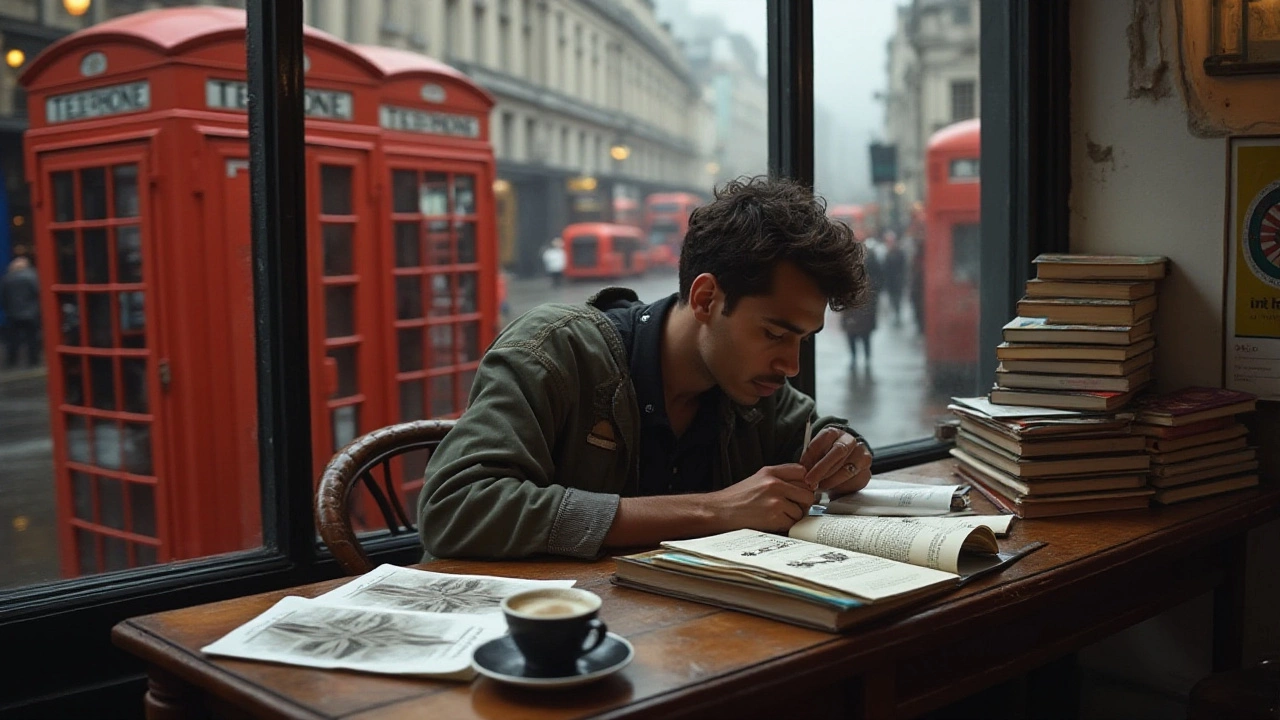
Historical Influences
The roots of modern art are deeply entwined with the cultural and social changes that swept across the world during the late 19th and early 20th centuries. Movements such as Impressionism, which emerged in the 1870s, broke away from the strictures of academic painting. This movement paved the way for artists to explore their own perceptions, famously shunning the rigid constraints of realism. They captured fleeting moments bathed in natural light and vibrant colors, thus setting the stage for more avant-garde explorations.
As we traverse the timeline, each art movement seemed to ignite the spark for the next evolution. Post-Impressionists like Vincent van Gogh and Paul Cézanne were not merely reacting to their forebears but were also carving out novel paths for artistic expression. Their willingness to distort form and revolutionize the use of color expressed an individuality that has since become central to modern art. This trajectory saw its zenith in the early 20th century, where the Cubists, led by Pablo Picasso, attempted to depict subjects from multiple angles within a single canvas. Moving beyond this, art became more abstract, heavily influenced by the rapid technological advancements and the consequent change in societal dynamics.
The impact of the two World Wars was equally instrumental in shaping modern art. An era of existentialism and questions of identity arose from the ashes, manifesting in the form of Dadaism and Surrealism, both of which challenged established norms and conventions. Dada artists, through their use of collage and found objects, mocked the absurdity of war and society, leading Andre Breton to proclaim, "In art, we must create what is purely an expression of the intellectual," symbolizing the shift in art's purpose.
Pablo Picasso once noted, "Art is a lie that makes us realize truth," underscoring the dual nature of modern works as both a reflection and distortion of reality.As time progressed, the influences of technology, culture, and politics continued to shape the modern art scene, with movements such as Abstract Expressionism in America during the 1940s and 1950s deepening the emphasis on individual expression and subconscious creativity.
The interplay of historical events with artistic expression is not solely a reflection of the past but a narrative that continues to evolve. Consider the role of Pop Art in the 1960s, as artists like Andy Warhol and Roy Lichtenstein utilized mass media symbols to blur the lines between 'high' art and 'low' culture, thus democratizing art amidst a backdrop of consumerism and the swiftly expanding media landscape. Each of these historical currents poured into the ever-widening bedrock of modern art, creating a fluid, living tapestry that encourages us to question our own realities and the shapes they could take.
Personal Connection
When it comes to interpreting modern art, the personal connection a viewer feels can often be the most impactful aspect of their experience. This connection is unique for each individual and can be influenced by a multitude of factors including cultural background, life experiences, and even mood at the time of viewing. Modern art, in all its varied forms, invites us to see the world through a different lens, deeply resonating with those who are open to its messages. For instance, a piece by Jackson Pollock might evoke chaos for one person while inspiring a sense of freedom for another. The subjective nature of art ensures that there's no right or wrong way to feel.
One pivotal thing to note is how modern art encourages introspection, prompting viewers to reflect on their thoughts and feelings. This introspective journey can lead to an emotional breakthrough or a nuanced appreciation of the more subtle details in life. A study published by the Art Therapy Journal found that people who engage with art regularly report higher levels of emotional well-being. This illustrates the potential power of art to influence our day-to-day mental health.
Given that art spans culture and time, it often speaks to universal human experiences such as love, struggle, fear, and triumph. Artists like Frida Kahlo and Edvard Munch have created works that tap deeply into such emotions, offering a cathartic experience for many viewers. Acknowledging this shared humanity — seeing one's own struggles and joys reflected in another's vision — bolsters the connection between viewer and piece. As Jeanette Winterson, celebrated author of 'Art Objects: Essays on Ecstasy and Effrontery,' once quipped:
"The purpose of art is not a rarified, intellectual distillate — it is life, intensified, brilliant life."
For those grappling with the enigmatic nature of modern art, a few tips can enhance and deepen that personal connection. First, approach each piece with an open mind, setting aside preconceived notions and embracing curiosity. Take time to observe, allowing the details and colors to wash over you, which can often lead to interesting revelations about the art and yourself. Documentation or research on the biographical background of artists can also provide added layers of insight into how their personal narratives shape their artwork, offering a fascinating peek into the person behind the creation.
Ultimately, the personal connection one forges with modern art is as distinct as a fingerprint. It's this subjectivity, this dialogue between art and observer, that casts aside any rigid rules of appreciation. Thereby allowing art appreciation to transform into a deeply enriching personal odyssey.
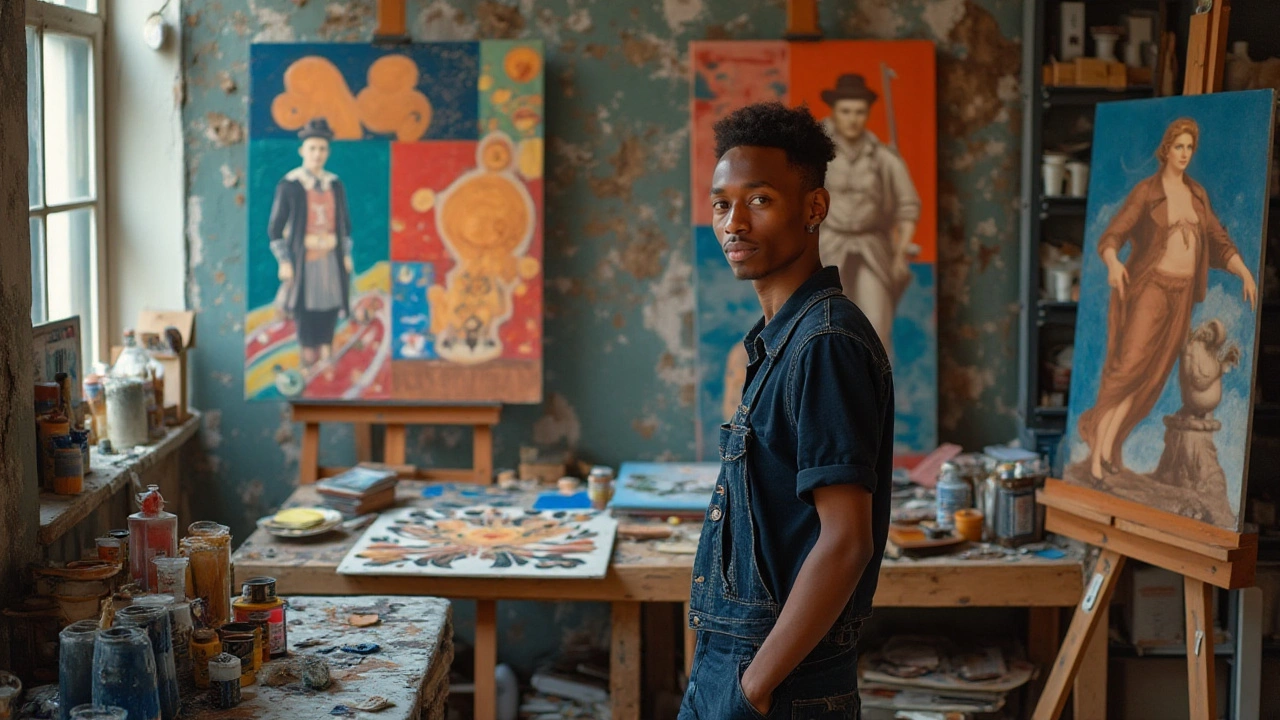
Tips for Art Critique
When it comes to critiquing modern art, having a few guiding principles can really help focus your thoughts and observations. First and foremost, try to experience the piece without bias. It's easy to let preconceptions shape your opinion, but giving yourself permission to just experience the work can lead to surprising insights. Observe the piece of art through the lens of its context which may include the artist’s intentions, the historical period in which it was created, and its place in the art movement. This context can add layers of meaning which may not be visible at first glance.
Another important tip is to pay attention to the techniques used by the artist. Analyze the materials, the textures, the use of color, and the overall composition. Often modern art is groundbreaking in its methods, challenging the very definition of art. Consider how these techniques impact the visual experience and possibly convey the artist’s message. Often, these elements are as much a part of the narrative as the image itself, and understanding them can deepen your appreciation.
Empathy and Emotion
The emotional impact of modern art is often its most provocative aspect. Allow yourself to feel. What emotions does the piece invoke? Is it making you uncomfortable, angry, or does it bring peace and joy? Emotional engagement is a valid and vital part of art critique. Many modern artists intentionally provoke, inviting us to confront our feelings and consider their broader implications. Paying attention to this emotional dialogue can reveal the artist's deeper commentary on society or personal struggles.
Objective and Subjective Approaches
Balancing objectivity with your subjective experience can be challenging but rewarding. Objectiveness is assisted by examining the formal elements of the work, while subjectiveness draws from your own experiences and intuition. Combining these perspectives provides a richer critique. As noted art critic John Berger once stated,
"Seeing comes before words. The child looks and recognizes before it can speak."By first engaging with an art piece on a visual and emotional level, you're better poised to identify concepts worthy of a deeper examination.
Engage with Art Communities
Discussion and discourse around modern art can significantly broaden your perspective. Engaging with art communities, either in person or online, provides diverse viewpoints and analytical frameworks. Participating in discussions or attending lectures can offer new insights and challenge your current understanding. The varied interpretations you encounter can further illuminate the complexities within a piece, offering rich material to inform your critique.
Practical Exercises
Incorporate practical exercises like keeping a journal of your impressions or sketching elements of the art piece. Journaling helps capture immediate reactions, themes, and evolving viewpoints, while sketching emphasizes attention to detail and composition. Over time, these activities can reveal patterns in your critique process, refining your skills and nurturing a deeper connection with modern art. Finally, remember that critiquing art is not about right or wrong answers. It's about exploration and the willingness to expand your artistic horizons.
